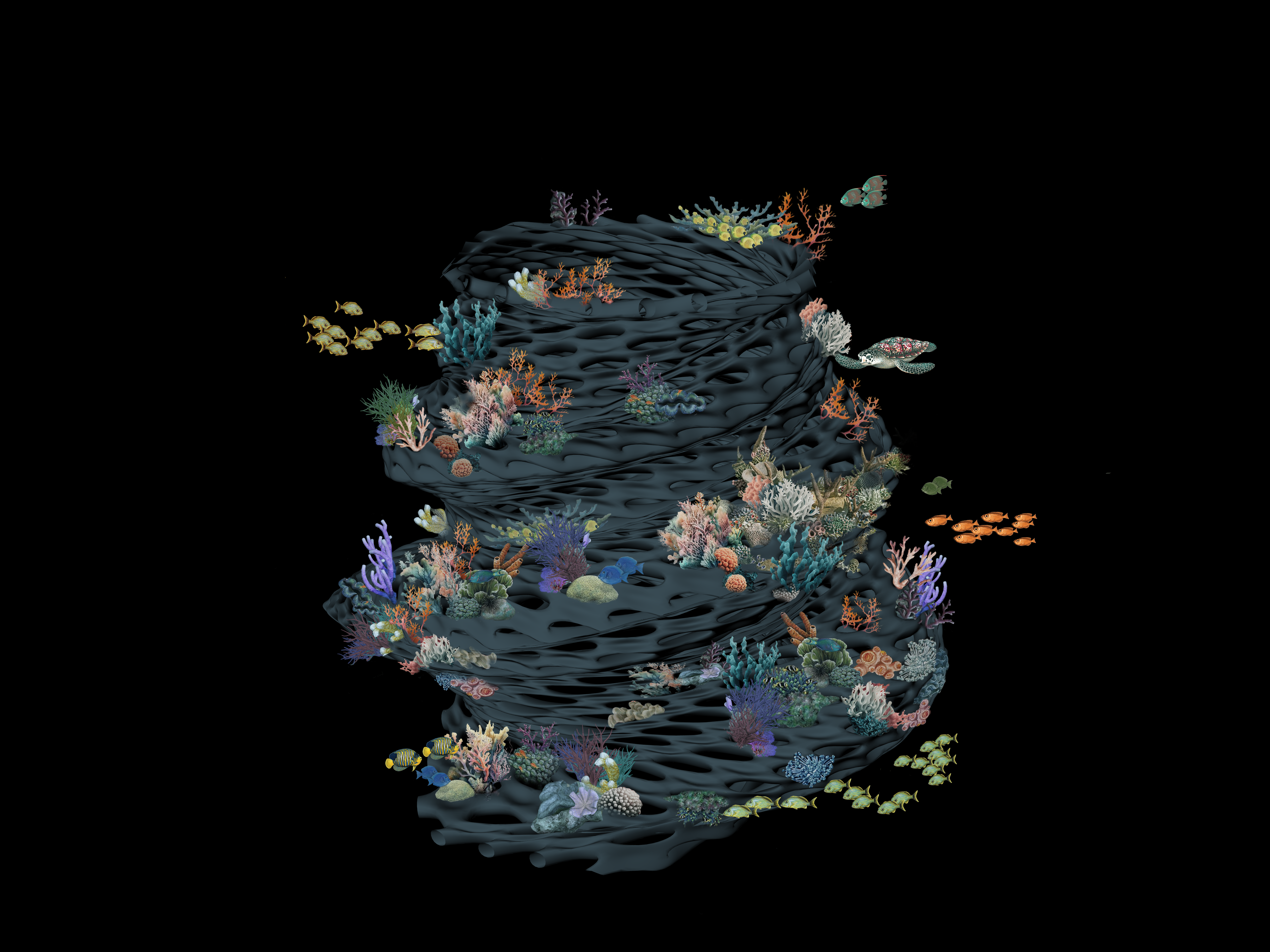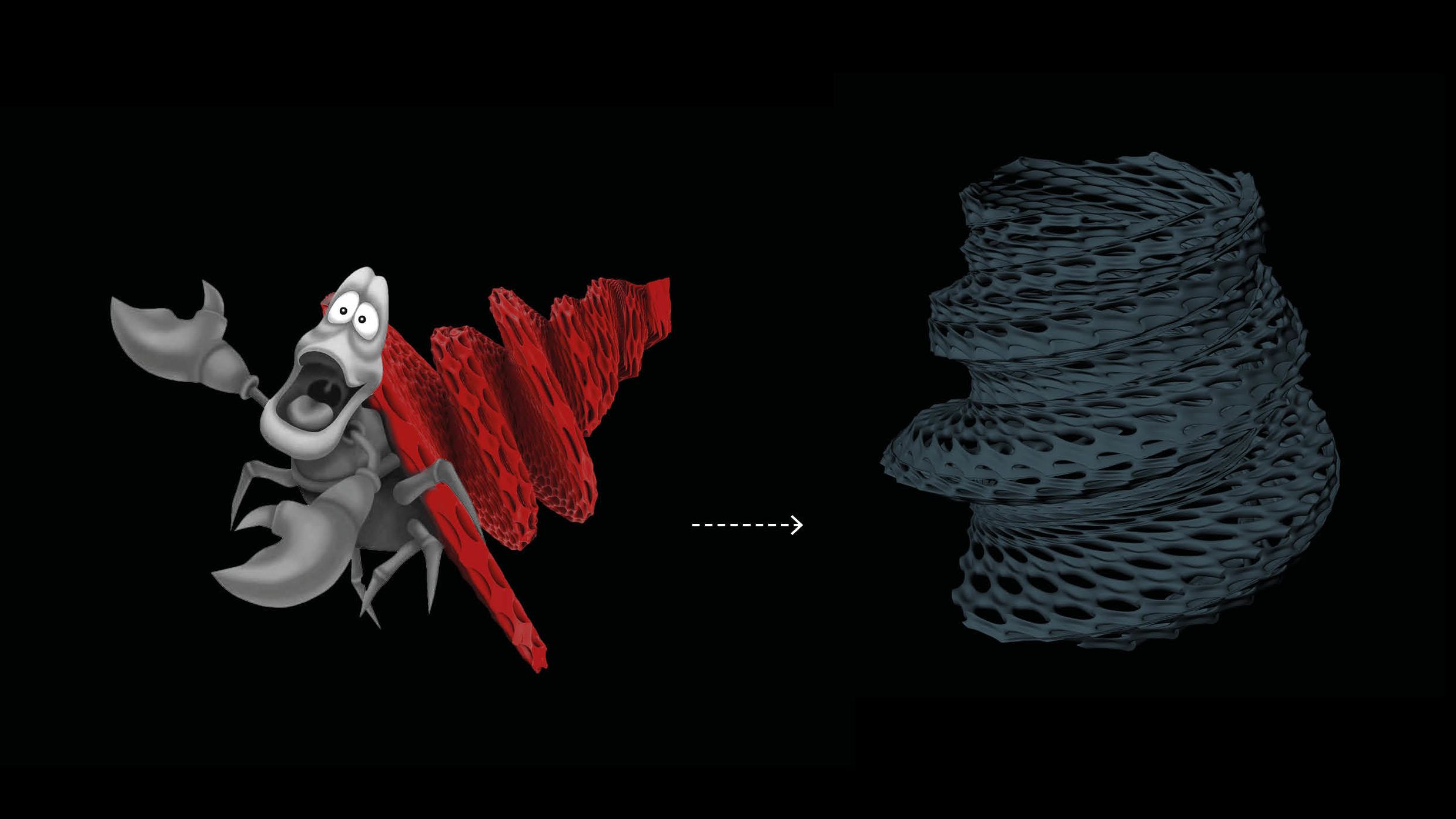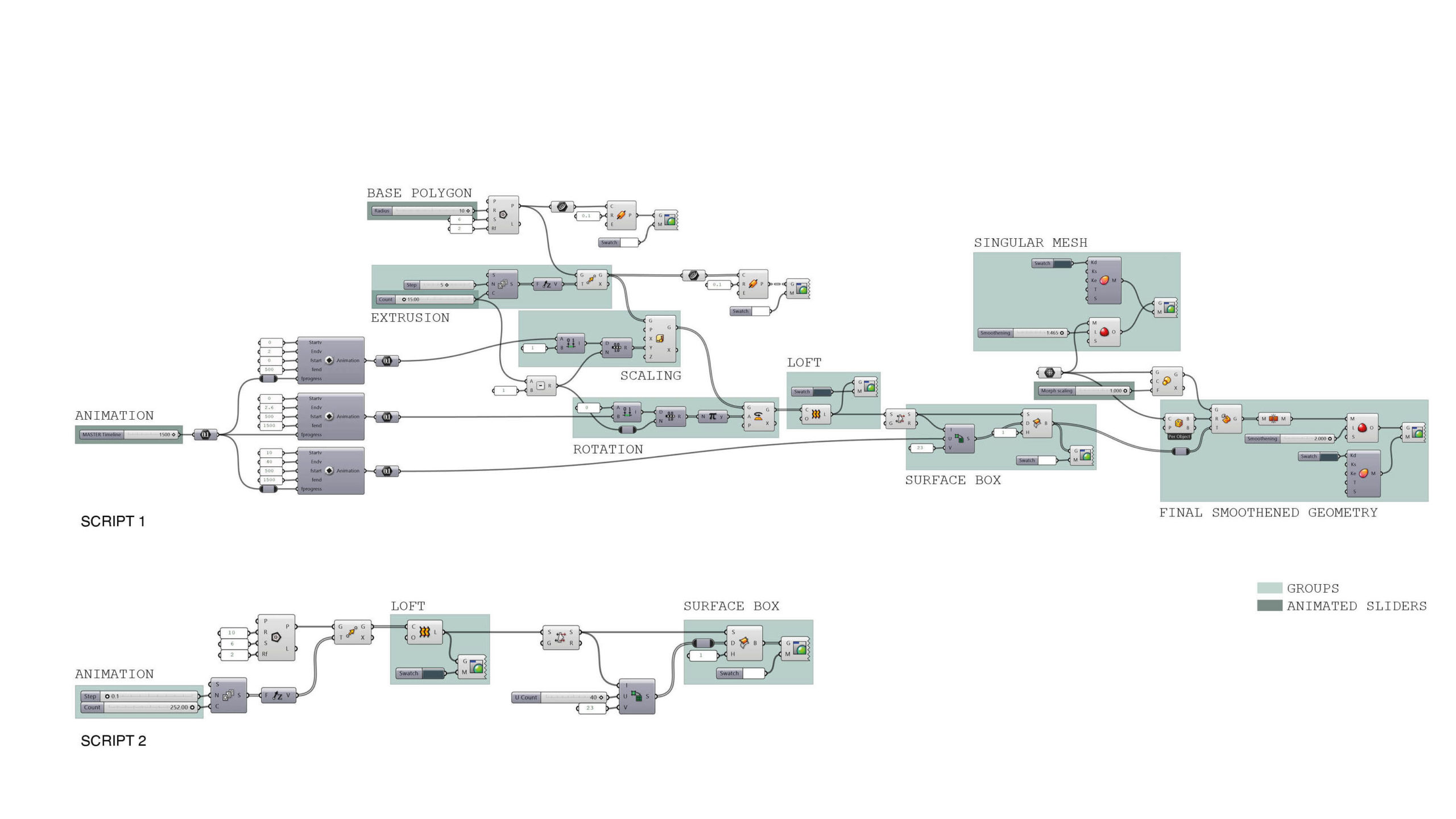Hexacoralia is a parametric design structure developed for restoration of coral reefs. It provides a complex surface for corals, sponges, and other organisms to attach and structural complexity creating spaces for fish and other animals to hide and inhabit. The organic appearance of the design proposal was inspired to mimic natural shapes of the underwater world and could potentially be 3d printed.

Artificial coral reefs serve as a substrate for coral attachment and growth, providing a suitable habitat for coral polyps to thrive. These structures are particularly important in areas where natural reefs have suffered damage or destruction due to factors such as coral bleaching, climate change, ocean acidification, and pollution.
It enhances local biodiversity by offering substrate for various marine species to colonize, as well as attracting and hosting a diverse range of marine life including fish, invertebrates, and other organisms. Diversity is vital for the adaptation and resilience of the coral population in the face of environmental stressors.

The design concept was inspired by the submission for Class Two of weekly assignments for the Digitals Tools module done by Diana Ruzanska, where a tower-like structure (left: Sebastian – crab from “The Little Mermaid”) was created. The decision was made to proceed with the sea-inspired theme creating an artificial coral reef structure.

During the module, we were assigned weekly individual tasks to explore the tools introduced in class. The top images depict a structure influenced by a building designed by Frei Otto in Munich, specifically the Olympic Stadium which is a significant landmark in my hometown. The bottom image represents an investigation into patterns achieved through minor adjustments in spacing.

Through the weekly exercises, have we acquired the necessary skill set to effectively create the following code for the artificial coral reef structure.

Script 1
The design proposal is based on a hexagonal polygon that is extruded and twisted along Z axis. The mesh geometry is based on a single element that is multiplied along the loft of the previously created hexagonal extrusion.
Script 2
For the animation of the Loft and the Surface Box, a second identical script was created, with more frequently placed polygons to create a smoother animation and allow to display several things that were previously connected to the same polygon displacement sliders.
Final assignment of the module was to create an animation using Grasshopper. This animation showcases the design process of the proposed artificial reef structure.

